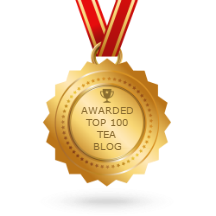Different regions have different types of water. This may be an obvious thing to point out, but since water is essential to drinking tea, this simple statement has implications for tea lovers everywhere. As our editor pointed out in a recent article, your water could be the reason that your tea didn’t taste quite like you expected it to. An earlier article on this blog gets into more detail, examining why it is that water types affect the way tea brews. But what does this mean for different tea blenders in different regions? And how does this affect the cup of tea that you brew up?

Water types, according to the classification system used by the United States Geological Survey, range from “very hard” to “soft” depending on the amount and type of minerals present in the water. The water for most households in the United States is classed as “hard”, although if you live in New England, the Pacific Northwest, or the South Atlantic-Gulf region your water will be a little softer. In most parts of England, the water is classed as “very hard”, but softer water is found in the west of the country. Continuing further west, in Ireland the water is even softer. Consequently, Irish companies such Lyons and Barry’s blend their teas specifically for soft water; as such, you might find they do not taste as good when brewed using hard water.
In recognition of the effect that water can have on tea, Yorkshire Tea by Taylor’s and Harrogate created a brew specifically designed for hard water. They do not give away the details of the blend, but their product description states that it is “a special blend of teas that work brilliantly in hard water, so you get a proper brew, no matter where you live.” Although they claim that they are the only company to blend for specific water types, the difference in water types is part of the reason why many tea companies market slightly different blends in different countries. The problem with this, of course, is that the distribution of water types is not necessarily consistent with modern nation states…
It is worth finding out what type of water you have access to. Soft water is generally considered to produce a better brew, and if you agree, there are steps you can take to remove some of the minerals in your water and make it softer. One suggestion is to use a water filter (this is preferable to using bottled water as it is a cheaper option). [Ed. note: these filters do not remove chlorine, only the taste and smell, so if you are sensitive to it, you may want to go with bottled water.] However, if you have grown up in an area with hard water, you may be used to the way it affects your tea, and you might actually prefer it. Either way, it is good to be aware of the water type in your area so that you can approach your tea drinking armed with this knowledge. In your enlightened state, you might decide to take action and tailor your tea to your water.
© Online Stores, Inc., and The English Tea Store Blog, 2009-2014. Unauthorized use and/or duplication of this material without express and written permission from this article’s author and/or the blog’s owner is strictly prohibited. Excerpts and links may be used, provided that full and clear credit is given to Online Stores, Inc., and The English Tea Store Blog with appropriate and specific direction to the original content.



Leave a comment